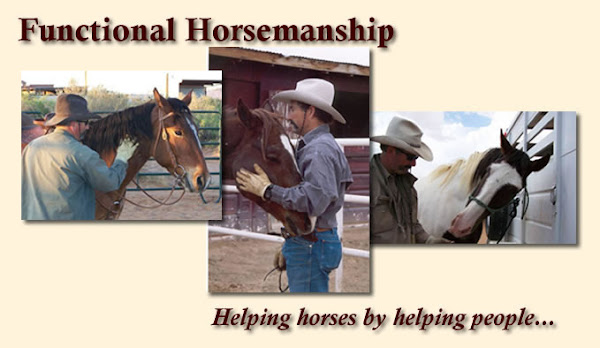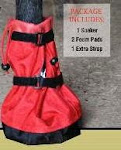It's often been said that a horse needs a job. In fact, he wants a job and the best job for a horse is working cattle. After a couple years of not being available to day work on neighboring cattle ranches, I was fortunate enough to spend the weekend working for a friend of mine gathering a four section pasture.
Leaving at 5am for a 50 minute drive on the highway to get to the ranch road and another 50 minutes of rough dirt road, put Junior at me at the South end of the pasture. The Sun was just beginning to crest above the hills to the East with very little clouds in the sky, and the forecast from the normally lying weatherman promised a hot, sunny day which I looked forward to and the prospect of working a bunch of cows outside of my normal routine of arena sorting. As singer/songwriter Dave Stamey would say "my heart rang like a bell" as we got horseback. Heading into the pasture my partner Truitt said "you gotta watch out here,...there are more rattlesnakes in this pasture than any other." Thirty feet later we encountered our first rattlesnake of the day, but I didn't see another one until towards the end of the day where I had to kill one at a gate.
The late Spring and Summer rains in West Texas, more than double (close to triple) our seasonal average made riding up the numerous draws in the pasture difficult as the vegetation was at times higher than my horse's head. Junior and I often got caught up in Buffalo Gourd vines hidden in the grass and weeds. After it was all said and done, I was glad to have put boots on Junior's front legs and I pulled tons of cactus spines out of these protective boots that would have been in his legs.
We were working for the owner who gave us a rough count of 136 head to account for, and no matter what the number was, every draw and back hill had to be checked. The plan was to push the mothers, weanlings, calves and bulls (if they were so inclined to participate) to pens at the North end of the pasture where we would seperate the bulls and weanlings for another pasture, and, brand, ear tag, vaccinate and castrate the calves.
Radios were pretty invaluable as Truitt rode up on the ridges and was able to glass for cows that I couldn't see from the ground and direct me to where they were. Driving the cattle to the center of the pasture and moving them North allowed us to pick up groups that were spread out, including the Bulls who most of them wouldn't go on my accord, but in the end decided to follow the momma's and calves along. At one point I was having a conversation with a recalitrant bull who was not wanting to move when a Mule Deer Buck stood up in the brush about 20 yards from me and bounded off, kinda breaking the spell.
It was alot of work for two Cowboys to keep the herd together and moving, rarely did we have a squirter, but we were successful in getting those turned around. I'm thankful that Truitt believed in low stress stockmanship. We both have worked with those who don't, so while I did alot of trotting back and forth at drag keeping the herd together, I never broke into a lope,....neither one of us did.
Some of the calves never seen a human before. One little red calf in particular seemed really curious about Junior and I, neglecting her momma to stay close to the drag end where she could watch me. When we had a lull to give the newborns a rest, I would ride up real slow to the little red calf, stopping when I saw her ready to break, then I would stop and look at her for a bit, then I would back up. After 10-15 seconds of thinking about it she would begin to approach us. This is what Curt Pate calls drawing them to you. I'd walk off slowly and that red calf would follow.
After five and a half hours of gathering and moving we had them at the pens at the North end of the pasture. We separated the bulls, all eight of them, ran them through the chutes to pour de-wormer on them, then loaded and trailered them to different pastures. Getting a head count of the remaining cows gave us 152 mommas and weanlings, and 38 unbranded calves.
The next day we separated the weanlings, then separated the calves. We moved the calves into a trap so we could get them into a squeeze chute table where they could be branded, ear tag, vaccinate, and castrated if they were a bull calf. My wife Susan and Truitt's wife Lauri worked the table efficiently and all the calves were finished by lunchtime. At the end of the day, the calves were put back onto their mommas and released in back into the pasture but not before the weanlings broke the pen latch and got mixed back up with the mommas. That turned out pretty well actually as we had to re-sort the weanlings from the mommas,..more work for our horses.
The opportunity to work my horse Junior a couple long days on cattle helped put all the things we work on in perspective....immediate transitions from a halt to a fast trot to step in back of a momma to get her following calf stopped,....stepping over on the front end and slowly working two weanlings and a calf until there was a space where we could step in and separate the calf to another pen,......walking real slow through the herd to check ear tags,......drawing a calf, that was face first in the corner, to us so we could get it turned in the right direction,....and just keeping Junior focused and positioned during the lulls in action where all worth a weekend totaling seven hours of long trailer rides over rough roads and all the things I had to push to the back burner of life in order to get out there. Even tying the horses for a couple hours as we branded calves was good for them. And the calves as from the calf table they were turned out into a pen were the horses were tied which is going to make those calve easier to handle as weanlings. Giving a horse a job,... I was glad to have it.

















